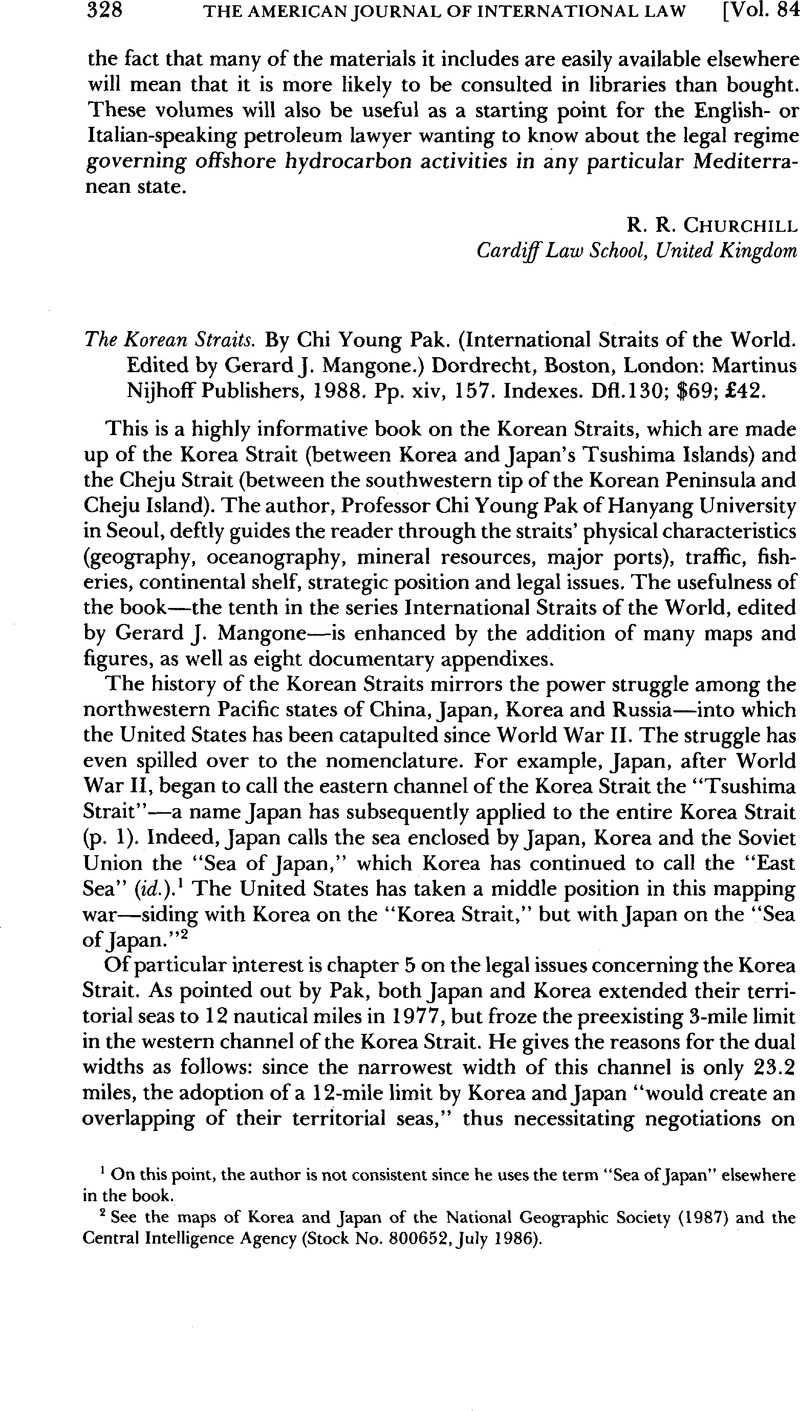Published online by Cambridge University Press: 27 February 2017

1 On this point, the author is not consistent since he uses the term “Sea of Japan” elsewhere in the book.
2 See the maps of Korea and Japan of the National Geographic Society (1987) and the Central Intelligence Agency (Stock No. 800652, July 1986).
3 For laws and regulations of states bordering straits relating to transit passage, see Article 42 of the Convention on the Law of the Sea, UN Doc. A/CONF.62/122 (1982), reprinted in 21 ILM 1261 (1982).
4 15 UST 1606, TIAS No. 5639, 516 UNTS 205.
5 See S.S. Lotus (Fr. v. Turk.), 1927 PCIJ (ser. A) No. 10. See also 2 World Court Reports 20 (M. Hudson ed. 1935).
6 488 Parl. Deb., H.L. (5th ser.) 594 (1987); 58 Brit. Y.B. Int’l L. 594 (1987).
7 See supra note 3.
8 Pp. 92–93, citing this reviewer’s The Law of the Sea Convention and Third States, 77 AJIL 541, 544–45 (1983), in contrast to Caminos & Molitor, Progressive Development of International Law and the Package Deal, 79 id. at 871, 872, 876–77, 880 (1985).
9 5 UST 2368, TIAS No. 3097, 238 UNTS 199. Article IV provides: “The Republic of Korea grants, and the United States of America accepts, the right to dispose United States land, air and sea forces in and about the territory of the Republic of Korea as determined by mutual agreement.” It should be noted, however, that none of the published agreements deals with U.S. transit rights through the Korea Strait. In any event, as applied to the Korea Strait, this article deals only with the disposition of U.S. naval forces, and not with the passage of commercial vessels.